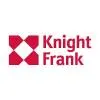The infrastructure major has progressed from strength to strength in terms of the number as well as variety of projects. So R Srinivasan spoke to Suhas Eklahare, Associate Director, NCC. Excerpts:What is the difference between the company's projects in Tier 2 and 3 cities and in Mumbai?The major differences in project execution are:The cost-of-living index is very high in Mumbai.Travelling is very time-consuming and tiring for staff working in Mumbai.Labour accommodation in Mumbai is very costly.Admission to good schools and colleges is difficult in Mumbai for children of staff.In Tier 2 and 3 cities, good education facilities are often not available for children.In metro cities, there is a lot of media attention and bad publicity for any mishap.What challenges has the company faced while sourcing raw materials for projects and how were they overcome?In general, raw material availability is quite good. That said, problems are faced in availability of natural sand due to the ban for environmental concerns and some clients insist on at least part use of natural sand. Similarly, there is artificial shortage of aggregate owing to non-revision of quarrying permissions for various reasons. These problems can be overcome by paying higher prices and or using alternatives like manufactured sand. For special grades of steel, there may be longer waiting periods due to lower demand, which needs to be tackled with advance planning and procurement action.What is the role of software to ensure timely delivery of projects?Generally, the majority of projects are monitored using Excel-based formats for MIS. However, over the past few years, due to increase in complexity, reduced timelines and higher demands for safety and quality, special software is being developed for real-time project information and monitoring. NCC uses specialised software with tailor-made dashboards and accessibility on mobiles to provide an efficient system for reliable MIS and quick response time for corrective actions to ensure projects are kept on track. 5D building information modelling (BIM) is also used on complicated and large projects. It captures along with L, B, D, information on scheduling (timelines) and costs incurred. This allows real-time information on quantum of work completed, stage of work completion against what is planned and costs incurred against the planned costs till the current stage of the project. Such software tools enable us to take the right decisions in time to support efficient project implementation.How does AI reduce the time and cost of projects?Artificial Intelligence (AI) means replacing decision-making abilities of competent human beings with machines. The construction industry is seen as slow in adopting latest software tools and technologies, the major reason being cheap manpower, acceptance of delays and deviations from standards. There is also resistance to change, as site personnel perceive it as additional workload since they are bogged down by pressures of brick-and-mortar physical issues at site. However, awareness and use of AI are slowly gaining acceptability. AI can be used for saving time, optimising costs by improving efficiencies of works and providing better organised data for the right decision-making. It can improve resource allocation, help in assessing risks and automation of repetitive tasks. It can be used for automated reminders, real-time updates, risk identification, resource allocation, tracking of tasks and seamless communication. At NCC, the use of AI is still at a nascent stage and its use is slowly gaining momentum.In view of Mumbai’s deteriorating average air quality index (AQI), what air monitoring measures should be carried out at sites?The methodology for air quality monitoring depends on the objective of monitoring and sensitivity of the location. The legal requirements of the region also need to be considered. First, a baseline study is to be conducted to understand existing air quality. The parameters monitored at construction/demolition sites of NCC are:Meteorological parameters: Wind speed and direction, temperature, air pressure, humidityAmbient air quality parameters: Particulate matter - PM10 & PM2.5; sulphur dioxide (SO2), nitrogen dioxide (NO2), carbon monoxide (CO)Diesel generator stack monitoring: NOx, Sox, PM, HC, etc.In terms of construction waste, UK's recovery rate was around 92.3 per cent. What should business houses in India do to manage their construction waste?In the Indian scenario, there is less sensitivity towards construction waste. Typically, a transport contractor is paid to pick up and dispose of the waste. Sometimes, he simply dumps the waste on roadsides, in nallahs, rivers or low-lying areas at odd hours. This is a very pathetic situation. It leads to blockage of waterways and drains and causes flooding in the monsoon. We try to use concrete waste for non-structural works. Steel waste is fully sent for recycling. Some solutions to handle waste are:The local authority should designate a few open yards for construction waste disposal.Solid waste processing machinery should be installed in yards.Security deposits can be collected from construction/demolition site owners to ensure compliance with the standard procedure.The methodology for debris storage, segregation and disposal ought to be finalised.The quantum of waste generation from each site is to be assessed before work begins and reconciled when it ends.Cameras can be installed on site for monitoring.Only registered and designated vehicles should be allowed to carry debris/construction waste.Once the construction waste is in the processing yard, it can be processed and converted into products like aggregates for PCC, precast drains, footpath tiles, precast components for compound wall, etc.The above products should be taken back by debris-generating owners and compulsorily used at their site. The products can also be used in municipal works. This will solve the construction waste problem to a large extent.Please comment on barriers to the usage of green steel and cement.Green steel means steel produced by the arc furnace route with scrap as the main raw material instead of iron ore. Also, energy required for steel production is generated from solar, green hydrogen, etc.To date, green steel is not easily available in India. As far as green cement is concerned, use of fly ash, blast furnace slag, etc, is prevalent. However, the use of power from green sources is yet not widely practised.Once green materials become available, the probable obstacles will be the willingness of clients to insist on green materials for use in the project and readiness to pay the initial higher prices than those of conventional products with a higher carbon footprint.




















